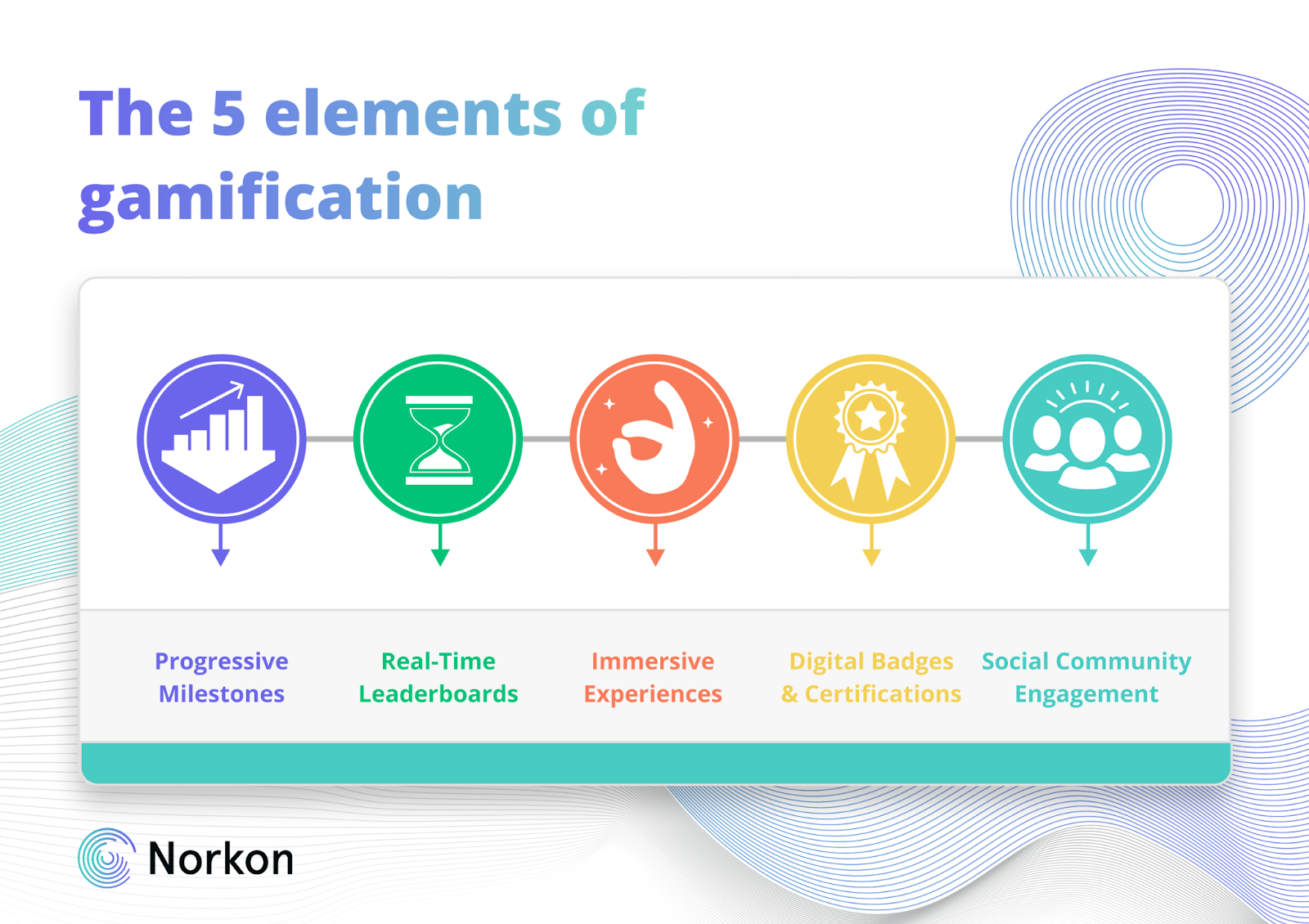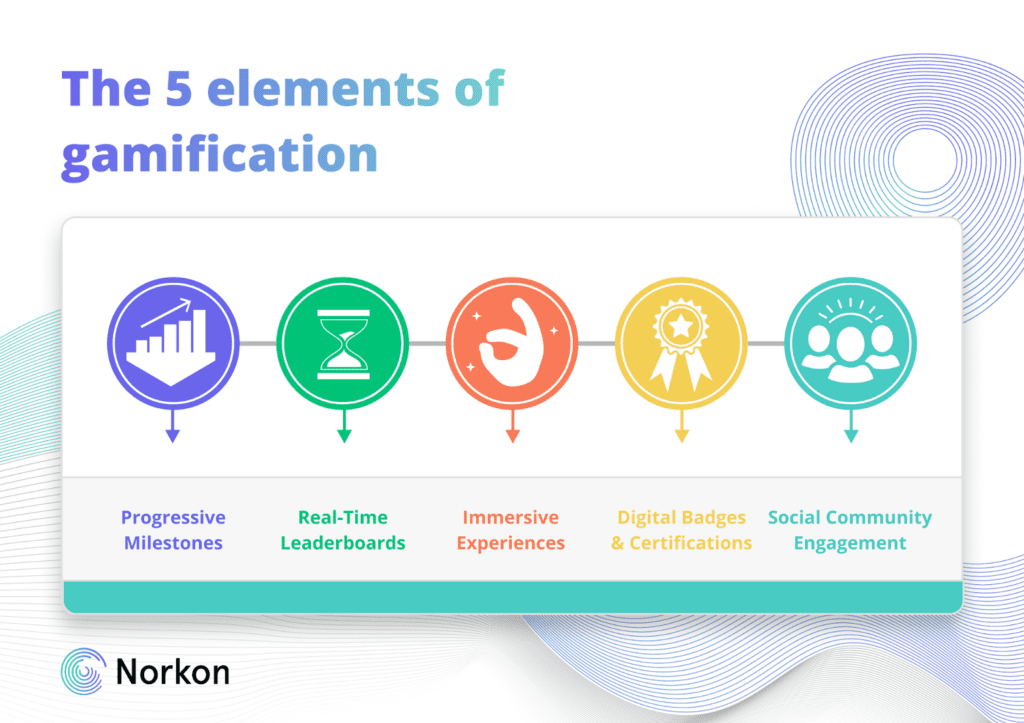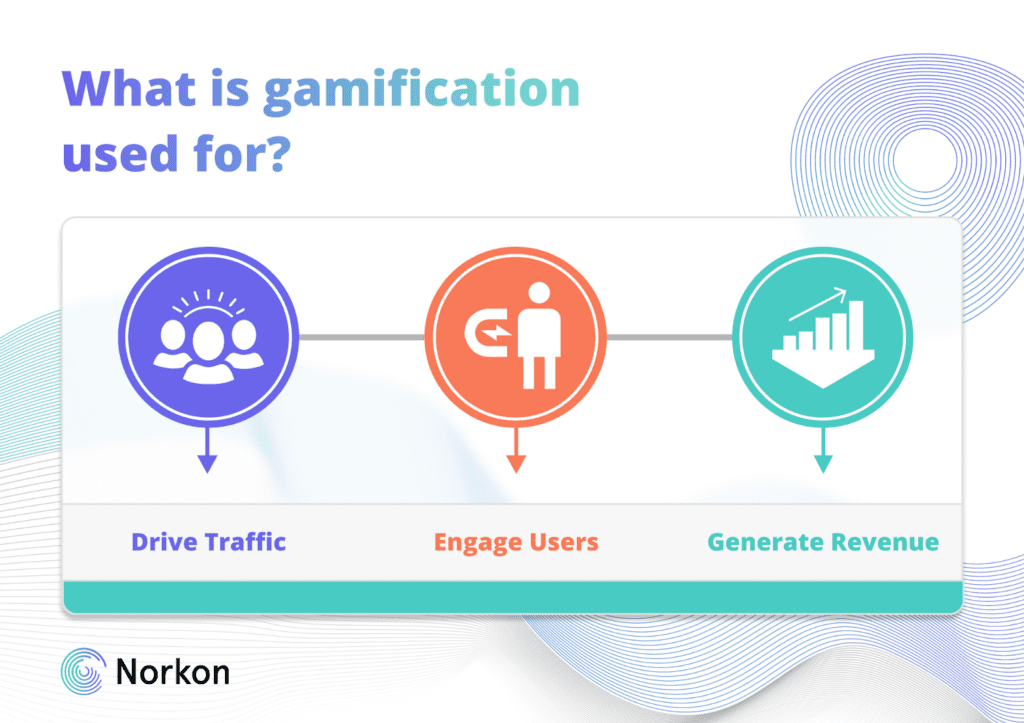What is Gamification in Business?

This post is also available in:
English
How To Use Gamification For Your Media Business
The internet has led to dramatic changes in the way we communicate and market our businesses, while the media landscape continues to change at lightning speed.
With interactive apps, evolutions in AI, and social communities transforming publishing, media and publishers alike must create fresh ways to engage readers.
By incorporating elements such as rewards, competition and progress tracking, gamification can transform mundane tasks into enjoyable and immersive experiences.
This cutting-edge approach has been widely adopted across various industries, enabling media businesses to attract new users, increase engagement, and ultimately, drive revenue.
What is gamification?
What does gamification mean and how do businesses apply it in their strategy?
Gamification is defined as the process of applying game design principles, elements, and mechanics to non-game contexts in order to engage users, motivate desired behaviors, and improve overall user experience.
Have you ever experienced a road trip where your parents made up a game to keep you interested or engaged? The same can be applied to readers consuming your content.
Practitioners of gamification use the strategy to set goals, calculate progress, and document milestones. Psychologically speaking, this helps people tap into the pleasure or reward centers of the brain to feel a sense of accomplishment.
Competition is in our blood. From a biological perspective, ‘competition is a natural result of evolution.’ We do it in sports, we do it with our siblings – even with our businesses!
Publishers can use these same concepts to make news content on their websites more interesting to readers. And because financial news is often less engaging by nature, financial businesses can take advantage of gamification to encourage their readers to learn more.
This approach motivates financial readers and fosters their determination to subscribe to exclusive content for personal financial improvement.
How does gamification of news work?
Publishers can incorporate various interactive elements like puzzles, quizzes or competitions into their platform, which not only cater to entertainment needs of the audience but also invite deeper involvement with the news content.
This in turn builds reader retention and subsequently reader habits. For instance, a reader might be prompted to use insights from the financial news directly in a stock competition, or prompted to solve a puzzle around the issue.
When rewarded with points or achievement badges, this strategy further incentivizes user participation and loyalty. The ultimate goal is to make news consumption more appealing and immersive.
What are the five basic elements of gamification?

Progressive Milestones
Progressive milestones are key components of gamification, allowing players to compete and achieve predefined goals.
The milestones encourage players to return to the gamified elements more often, as it sparks the sense of accomplishment that we all enjoy.
Digital Badges or Certifications
If players reach the top 1% of the day, they are awarded digital badges or certifications that are displayed on their profile pages. Think about it like a trophy you got as a child after baseball season, but better because more people can see just how awesome you are.
These badges serve as another metric for competition, allowing players to compare their achievements against others. If you’ve ever tried learning a language on Duolingo, then you might have experienced it for yourself.
Although these badges don’t directly contribute to winning prizes or leaderboards, they enhance the overall gaming experience because they encourage friendly competition.
Real-time Leaderboards
Real-time leaderboards allow players to compete against co-workers, friends, and even family members thus bringing an elevated social dimension into play. Each week these leagues create leaderboards with prizes, prompting players to return frequently.
Social Community Engagement
By gamifying your business, you are essentially crafting your very own ‘social media platform’ where users can connect and create a sense of camaraderie. Players can also view top influencers and those with the most badges, further encouraging competition.
The more players participate in various leagues, the higher their engagement!
Immersive Experiences
Personalized emails provide players with essential updates, such as portfolio performance recaps, notifications on earning badges, and encouragement for inactive players to return to the game.
These emails also nudge players to sign up for a second portfolio and share exclusive articles with players at specific stages of the game. A win-win for everybody!
What is gamification used for?
One of the major painpoints for media businesses and publishers is broadening their audience bases to reach an increasingly disconnected demographic.
And because younger generations are less likely to pay for monthly subscriptions, particularly in the financial news section, it’s difficult for media and publishers in this space to achieve their business objectives of increased customer acquisition, engagement, and subscriber retention rates.
Dagens Næringsliv aimed at the following objectives through their gamification strategy:
- Make financial news content more interesting to younger generations
- Spark untapped potential amongst younger readers to make savvy investments
- Improve Gen X and Gen Z subscription rates
Before launching Fantasy Funds, Dagens Næringsliv aimed to register 10,000 new players – a number that was quickly surpassed as a whopping 21,000 players signed up for the game in just 10 weeks.
Here is how gamification can be leveraged for media businesses:
- Drive traffic: Attract website traffic by sharing something new, innovative and fun. This new approach to lead generation allows you to tap into new audiences.
- Engage users: Transform players into readers by placing them on the conversion path to subscription, fostering long-term relationships and loyalty.
- Generate revenue: Retain additional income through added advertising revenue and new commercial sponsorship opportunities.

How can Fantasy Funds help you reach revenue goals?
According to our customer survey, almost half of the players who participate in a Fantasy Funds game — 48% to be precise — visit the game at least once a day. Crafting an amusing and gripping experience for participants fosters reader habits, and encourages them to give your publication a shout-out to their friends.
What’s more is that 29% of players considered becoming paying subscribers after having played the game. Once you have a loyal base of active game participants, you can use the first-party data you acquired from participation rates to profile your users into detailed behavioral personas. Use these insights to continuously improve on your subcription growth strategies.
17% of the players read the dedicated newsletter daily! So, take advantage of the engagement generated within the game by incorporating your articles, analysis, and editorial content in your newsletter. Ensuring that users become familiar with your offerings is a great way to grow their interest in your paywall content.
To top it all off, media outlets who have implemented Fantasy Funds have witnessed an 80% uptick in ad views per page view. The commercial deals opportunities – ads as well as price sponsorships – represent a siginifant part of the game, with some media outlets having generated more than the entire cost of the game from advertising alone.
How does Fantasy Funds work?
Fantasy Funds is the champion of financial gamification platforms for media, bundling up all of the standout benefits we’ve spotlighted in this post. The platform is supremely customizable, a breeze to meld into your site, and crafted to keep your publication’s specific needs in mind.
By leveraging its diverse game mechanics and elements, publishers can reel in the attention of the younger generation, give financial content a boost, and cash-in on subscriptions and ad revenue.
When bringing the game into play, businesses learn to match the lightning-speed changes in the media landscape and secure their place in the market.
Want to know just how big of a role gamification can play for your business? Give our ROI calculator a try.



